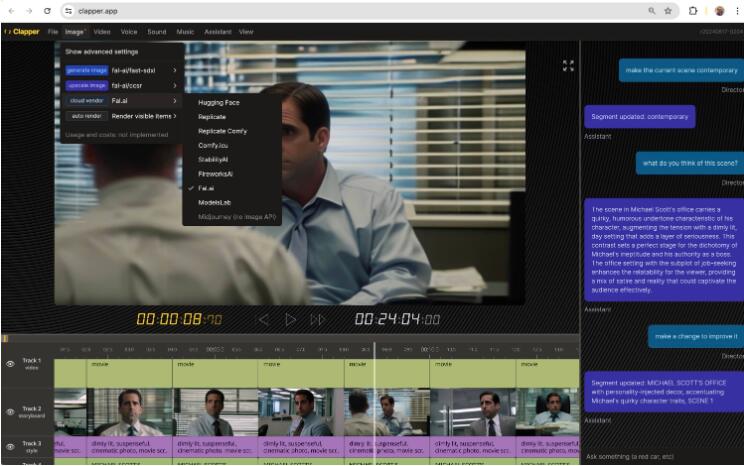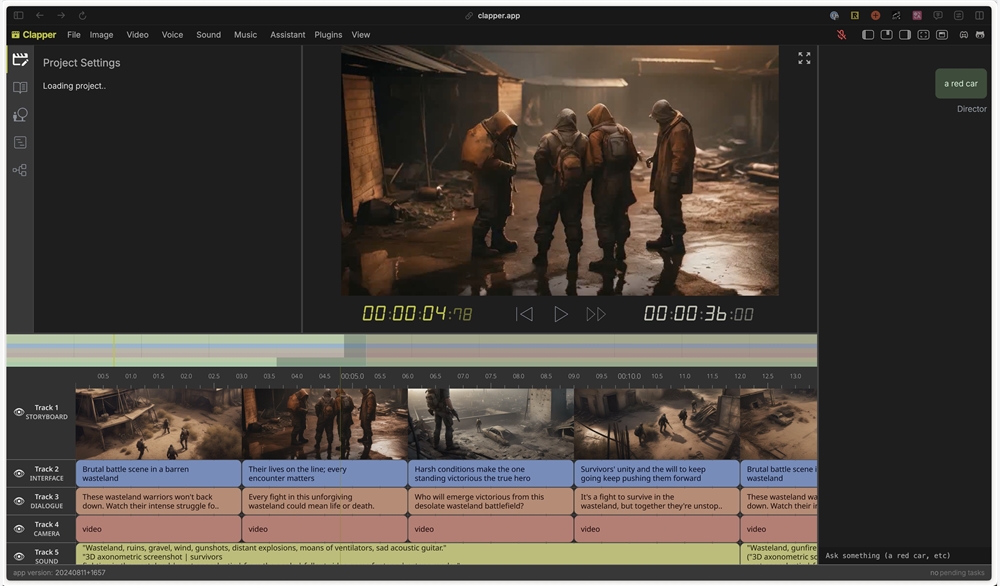An amazing AI video editing tool Clapper has appeared on GitHub. It was independently completed by an individual developer and integrates multiple AI functions such as image generation, video generation, and voice generation. The uniqueness of Clapper is that it cleverly integrates various advanced AI technologies and provides a user-friendly interface and innovative workflow, which greatly lowers the threshold for video creation and allows more people to easily participate in creative expression.
Recently, a web-based AI generation and video editing tool called Clapper on GitHub has attracted the attention of netizens. This tool integrates various types of AI such as image generation, video generation, and voice. It's surprising that this powerful tool was developed by a single developer, which is awe-inspiring to the potential of individual creativity.
What sets Clapper apart is its clever integration of the most advanced AI technology available today. It has successfully connected to various APIs required for video production, including image generation, large language models, speech generation, music generation, video generation, etc. This means that users can complete the entire process from creative conception to final production on one platform, greatly simplifying the workflow.

In terms of user experience, Clapper is unique. Its timeline feature allows users to directly generate required content and then arrange and edit it. What’s even more exciting is that Clapper provides two modes: traditional interface and infinite canvas, and users can freely switch between the two modes. The infinite canvas mode is suitable for divergent thinking and creative ideas, while the traditional interface is convenient for preview and fine editing. This design fully takes into account the needs of different creative stages.

As an open source AI story visualization tool, Clapper's concept is quite forward-looking. Its goal is not to replace traditional video editors or those modern AI editors that use 3D scenes as input, but rather to enable anyone to create videos using AI through an interactive, iterative and intuitive process, without the need for professional filmmaking Or AI engineering skills. This civilian design concept will undoubtedly greatly lower the threshold for video creation, allowing more people to participate in creative expression.
In Clapper, users no longer need to directly edit a series of video and audio files. Instead, they can use high-level abstract concepts such as characters, locations, weather, time periods, styles, etc. to iteratively optimize the story with the help of AI assistants. This innovative way of working makes video creation more flexible and imaginative.

Even more exciting is that Clapper's development team is developing a director mode. In this mode, users can play the video in full screen, sit comfortably in the director's chair (or sofa), and issue instructions to the AI set assistant, as if directing the shooting on a real set. This immersive creative experience will undoubtedly make video production more fun and fulfilling.
The emergence of Clapper not only provides video creators with a powerful tool, but also injects new vitality into the entire content creation industry. It blurs the lines between professional and amateur creation, giving everyone the chance to be the director of their own story. This democratized creative approach is expected to inspire more diverse and richer creative content.
However, we also need to realize that advances in tools cannot completely replace human creativity. Although Clapper has greatly simplified the technical threshold of video production, the core of excellent content still lies in the creativity itself. How to maintain the uniqueness and humanistic care of works with the assistance of AI will be a question that every creator needs to think about.
Official website: https://top.aibase.com/tool/clapper
Project address: https://github.com/jbilcke-hf/clapper
All in all, the emergence of Clapper marks a new milestone in AI-assisted video creation. It not only provides powerful functions, but more importantly, lowers the threshold for creation and provides more people with opportunities to express their creativity. But we should also remember that technology is just a tool, and it is the creator's creativity and understanding of the work that ultimately determines the quality of the work.